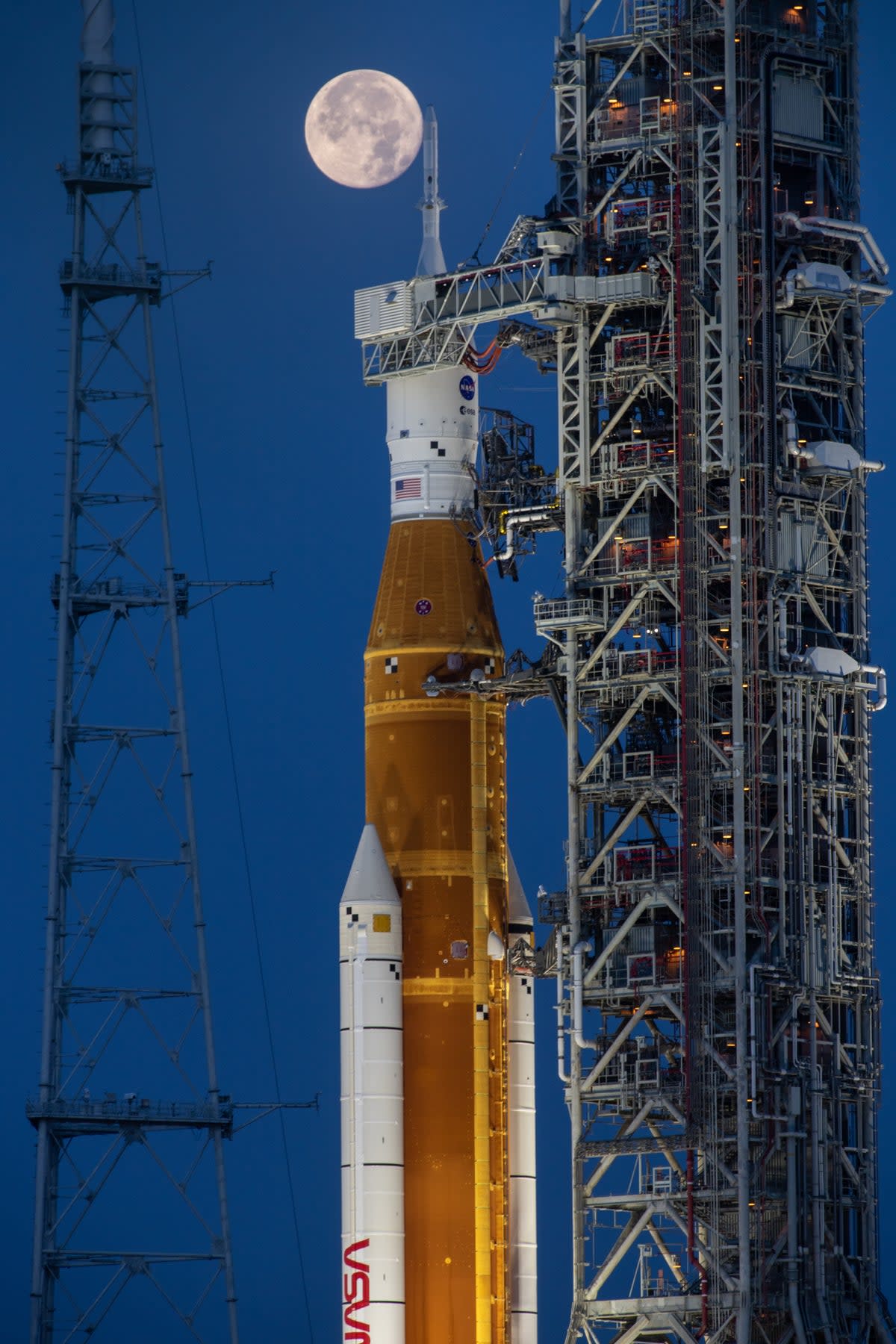How to watch Nasa begin fueling its big new Moon rocket for launch on Monday morning

The countdown to the first launch of Nasa’s new Moon program is on, and live coverage of the fueling of the space agency’s powerful new rocket will begin at 12am EDT Monday morning.
The launch window for Nasa’s Artemis I mission opens at 8.33am EDT Monday, and tanking operations to load the mission’s Space Launch System (SLS) rocket with liquid hydrogen and liquid oxygen will be be carried live on Nasa’s website, Nasa TV, and the space agency’s app.
Coverage of the immediate pre-flight preparations and the Artemis I launch itself will begin at 6.30am EDT Monday, and will be available on the same channels as the fueling, as well as on Nasa’s Twitter, Youtube and Facebook accounts, among others.
As of late Sunday Nasa officials were hopeful that Artemis I would launch as expected, with weather forecasts for Kennedy Space Center, in Florida, showing an 80% chance for favorable conditions during the Monday morning launch window. Clear skies would be welcome for Nasa’s ground crews, who ensured the SLS and Orion were not damaged by multiple lightning strikes near the launch pad during a thunderstorm on Saturday.
✅ No impacts from strikes to lightning towers
🚀 @NASA_SLS core stage powered up
🔋 @NASA_Orion and core stage batteries charged
📺 Live coverage of tanking operations will begin at midnight on NASA TV, https://t.co/XrzUbfCBK9, & NASA app
MORE: https://t.co/8nDmLYKer1 pic.twitter.com/dHDqxWIRzy— NASA's Exploration Ground Systems (@NASAGroundSys) August 28, 2022
The SLS is the most powerful rocket to ever launch from Earth, providing more thrust than even the Saturn V rocket that took Apollo astronauts to the Moon. Monday’s launch will serve as the first ever test flight for the big rocket, which Nasa hopes will power at least a half decade of lunar missions, and also serve to launch deep space missions to other parts of the Solar System.
SLS will carry the Orion spacecraft to low Earth orbit and set it on course for the Moon. Orion is the spacecraft that will carry humans around the Moon during Artemis II, in 2024, and will carry astronauts who will then transfer to a lunar lander built by SpaceX to return to the surface of the Moon during Artemis III in 2025.
Artemis I will see the Orion spacecraft fly around and beyond the Moon before returning to Earth 42 days later to test Orion’s heat shield during re-entry. The spacecraft will record important data Nasa can use to make decisions and any changes prior to the later, crewed Artemis Missions.
If all goes well, Artemis IV will see astronauts construct a lunar space station, while late missions into the early 2030s will see astronauts build Moon bases where Nasa can practice new operations and test new technologies to rehearse for the space agency’s next human spaceflight goal — going to Mars.

